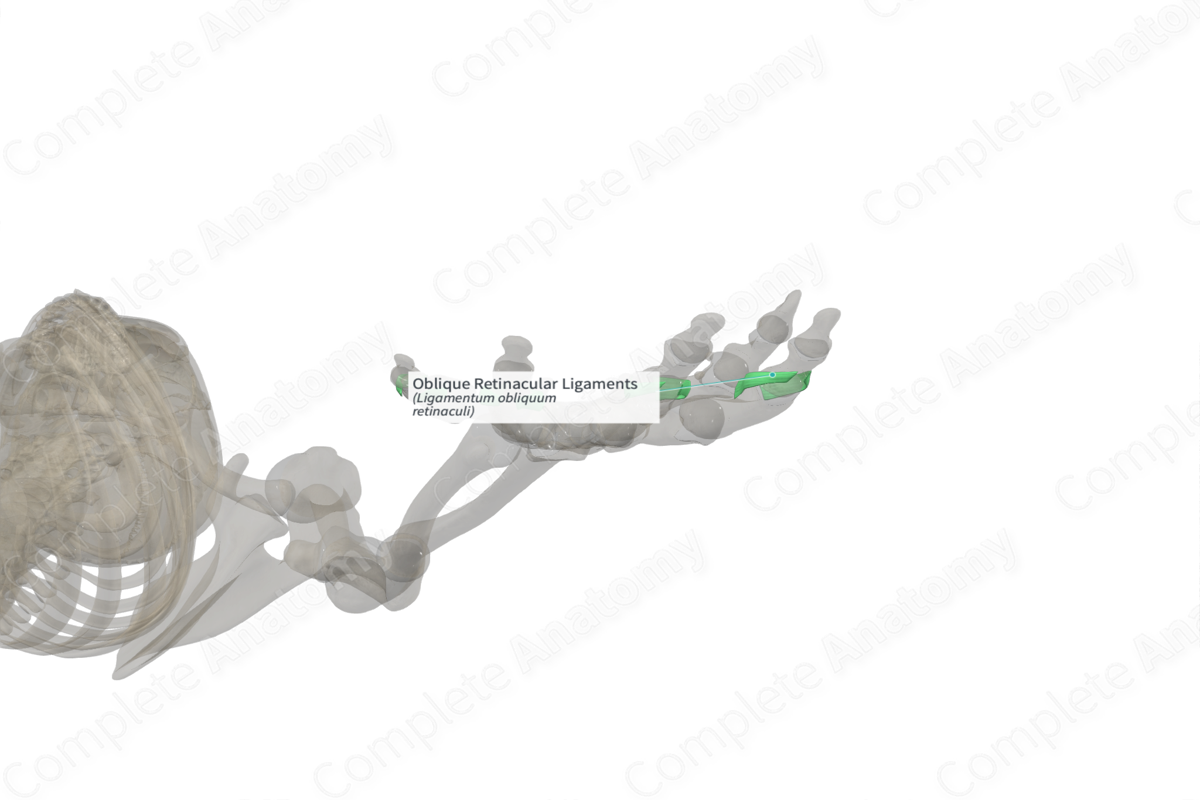
Anatomical Relations
Both the oblique and transverse retinacular ligaments link the flexor sheath to the extensor apparatus.
The oblique retinacular ligament sits deep to its transverse counterpart. It arises from the A2 annular pulley of the flexor sheath and adjacent portion of the lateral aspect of the proximal phalanx. It inserts into the distal component of the extensor tendon (Standring, 2016).
Structure
Both the oblique and transverse retinacular ligaments are part of the distal fascial complex (Standring, 2016).
Function
The transverse and oblique retinacular ligaments aid in the stabilization of the extensor apparatus and in the coordinate flexion and extension of the interphalangeal joints (Colzani et al., 2016).
References
Colzani, G., Tos, P., Battiston, B., Merolla, G., Porcellini, G. and Artiaco, S. (2016) 'Traumatic Extensor Tendon Injuries to the Hand: Clinical Anatomy, Biomechanics, and Surgical Procedure Review', J Hand Microsurg, 8(1), pp. 2-12.Standring, S. (2016) Gray's Anatomy: The Anatomical Basis of Clinical Practice. Gray's Anatomy Series 41st edn.: Elsevier Limited.




